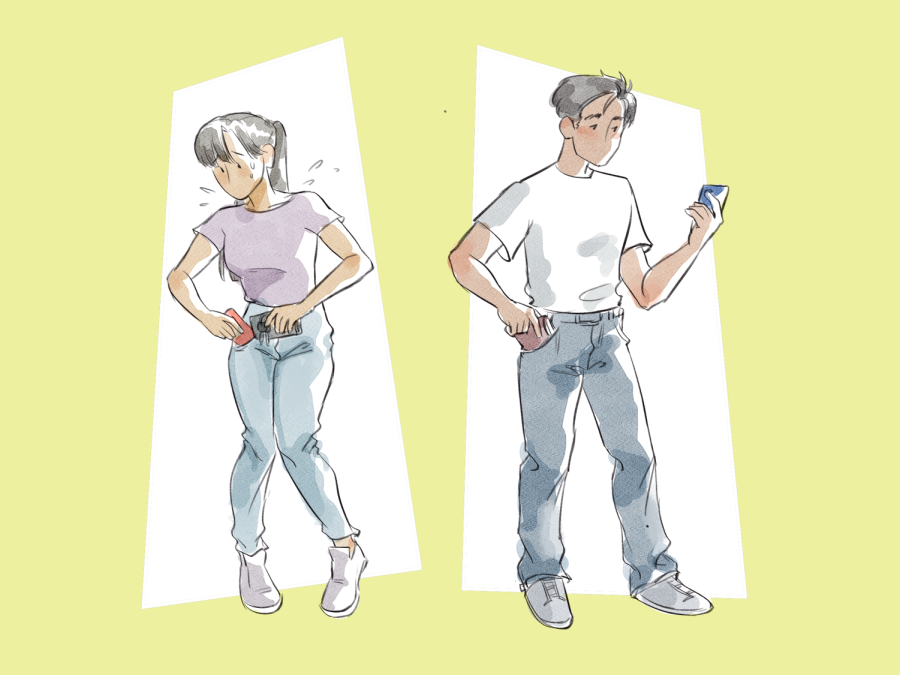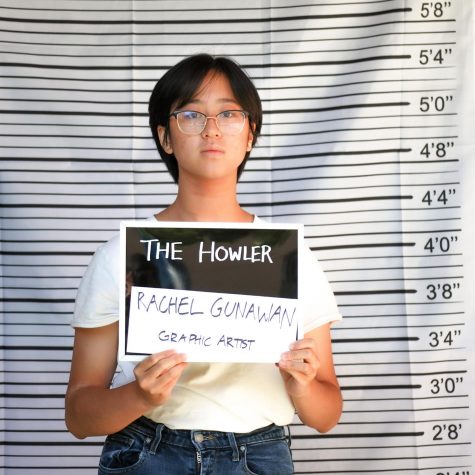Pocket discrimination and what it says about equality
October 16, 2021
Finding apparel with pockets is an age-old struggle for all who wear women’s clothing. You either have to sacrifice functionality, quality or style—there is no happy medium. The issue isn’t just the smaller or nonexistent pocket: It’s the fact that pockets illustrate the broader inequality between men and women.
It is no surprise that sexism and discrimination are present even in the modern fashion industry. There is even a specific term to describe the social pressures people—most often women—feel to intensively pursue beauty, otherwise known as the prescriptive beauty norm.
“Women’s belief that their value is determined by their beauty, which translates into their self-objectification, negatively impacts women and gender equality,” Harvard’s Gender Action Portal states. “Women’s self-objectification has been found to be associated with decreased political activism for gender equality and less assertiveness in cross-gender interactions.”
Time and time again, women have been limited from actively participating in their community, from being denied political roles on the basis of their gender to failing to receive an equal-paying job. Gendered fashion is one contributor to this sexism; traditionally speaking, men’s clothing has been modeled to serve a more active lifestyle. These traditional gender roles have painted men to be “doers,” who provide for the family by working, while women are expected to be confined to household chores. According to a digital publication and data visualization website called The Pudding, women’s pockets are 48% shorter and 6.5% narrower than men’s pockets on average. For what many consider to be a minor issue, this difference is significantly large.
“Men have pockets to keep things in, women for decoration,” prominent fashion designer Christian Dior said in 1954, implying that men have more important things to carry compared to women, who have no real purpose with pockets. The fact that Dior’s statement is from over half a century ago shows the consistent lack of pockets in women’s clothing over the past few decades.
It’s not that women have always had to struggle with pockets. During medieval times when society’s perception of women was extremely constricting, both women and men had “pockets” (more similar to modern-day fanny packs), supposedly to carry useful items. Towards the end of the 18th century, fashion trends changed, molding their attire’s taste into a narrower idea of beauty. The fashion industry, which was mostly controlled by men at that time, had a new purpose: to accentuate a woman’s curves. Pockets fell out of fashion when women’s clothing became more form-fitting and the need for a perfect figure trumped the utility of carrying items. Many turned to purses to carry their items; but not only did that make them more vulnerable to theft, but it also meant losing mobility of both their hands, something men still had. Having large, spacious pockets in clothing for all genders is not just about pockets. It is about equality and allowing both men and women to assert their independence.
Pocket discrimination is one of the many aspects of our society that holds over half of the population back and restricts those who wear women’s clothing from being on par with their male counterparts. Pocket privilege has simply been handed to men, while like many other issues, women have to fight for it: Smaller, women-owned brands that recognize this issue are taking action to combat the sexist history behind it. It might seem like a minor complaint in the grand scheme of things, these small issues speak to subliminal messages regarding gender disparity.



![AAAAAND ANOTHER THING: [CENSORED] [REDACTED] [BABY SCREAMING] [SIRENS] [SILENCE].](https://thehowleronline.org/wp-content/uploads/2025/06/lucy-1200x800.jpg)





















































![AAAAAND ANOTHER THING: [CENSORED] [REDACTED] [BABY SCREAMING] [SIRENS] [SILENCE].](https://thehowleronline.org/wp-content/uploads/2025/06/lucy-300x200.jpg)

Kendra Kroll
Aug 6, 2024 at 10:07 am
if you need pockets that actually work, try this.
works with ANY outfit & makes your life easier.
I use ’em daily…and have for years.
portapocket (dot) com
xo
Kai
Feb 11, 2024 at 11:44 pm
Primark And H&M are major discrimators in this respect, as they stubbornly refuse to put proper pockets in all their ladies garments, internal pockets are missing from all their ladies coats & jackets.